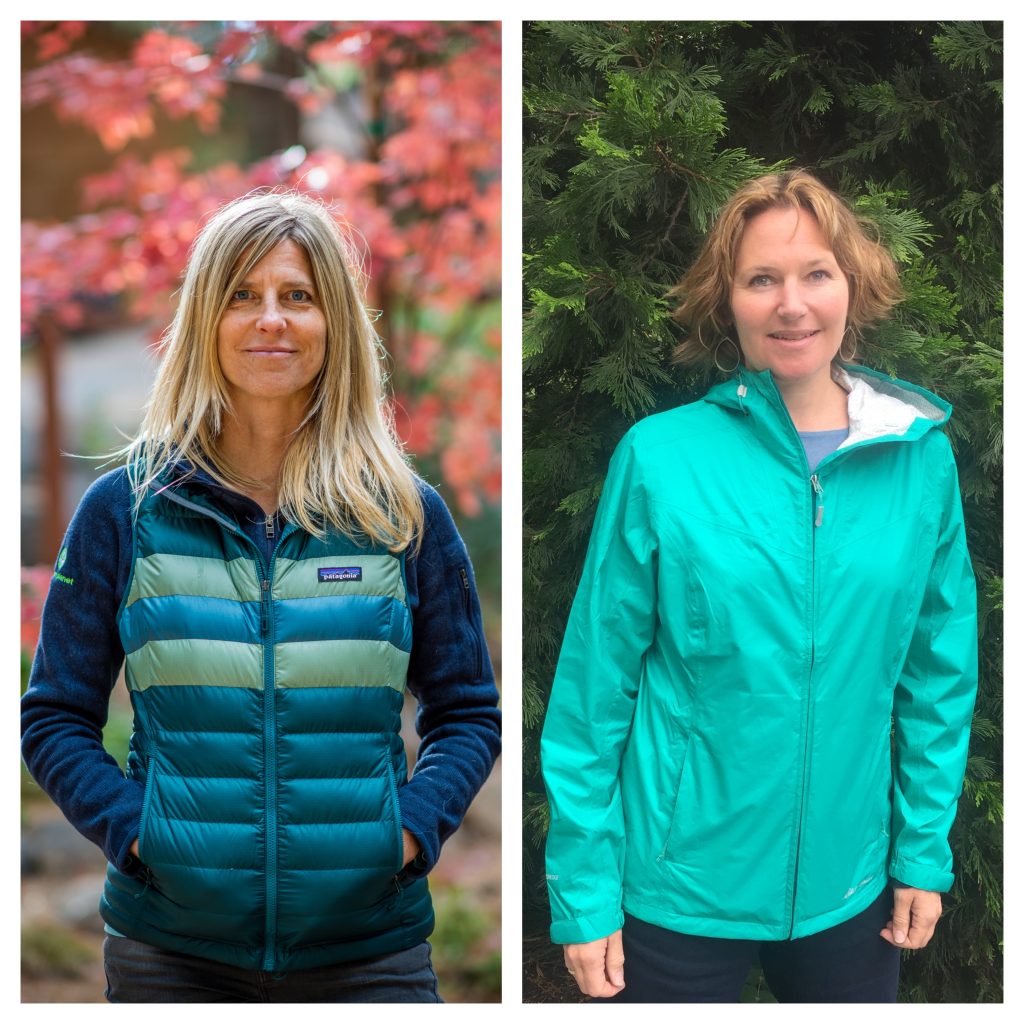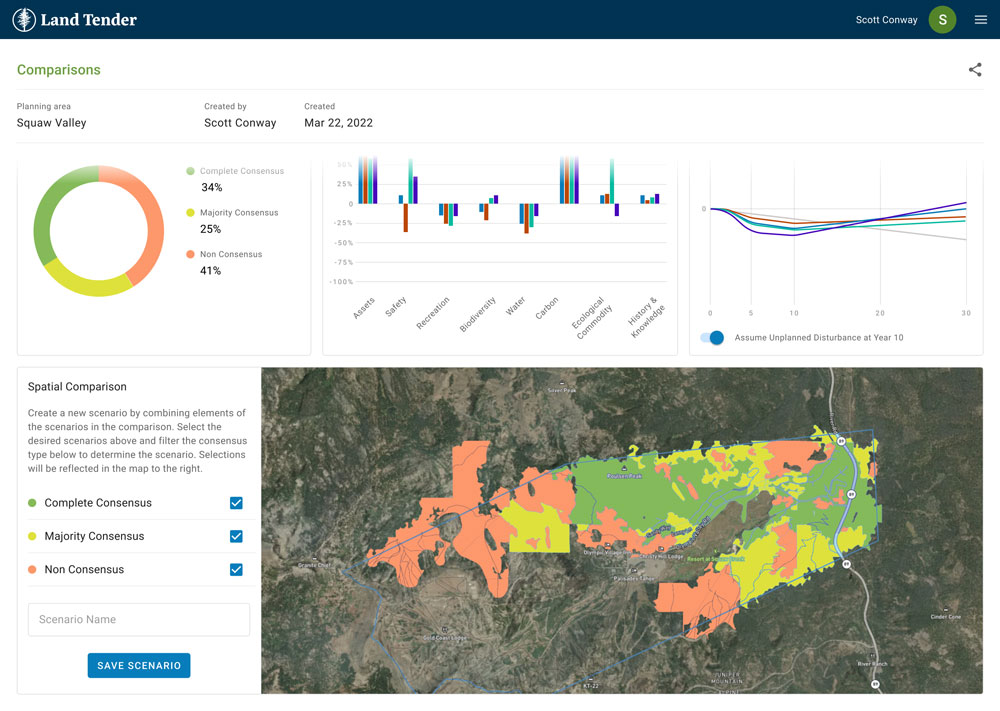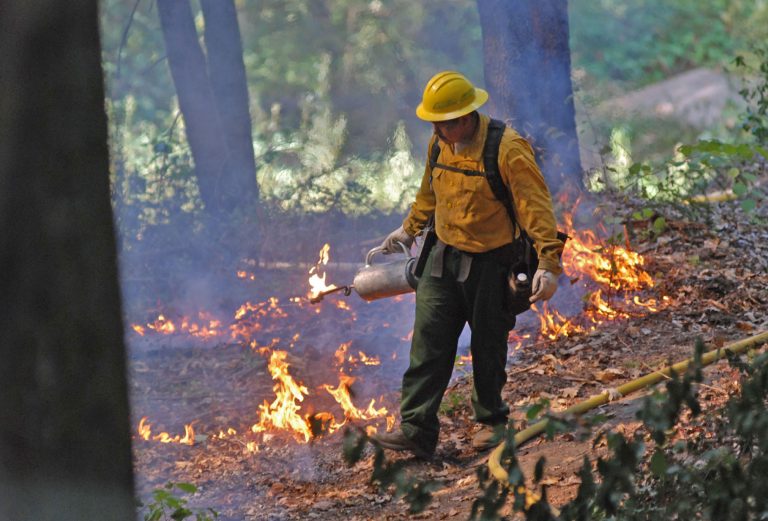- I recommend the Pixel 9 to most people looking to upgrade - especially while it's $250 off
- Google's viral research assistant just got its own app - here's how it can help you
- Sony will give you a free 55-inch 4K TV right now - but this is the last day to qualify
- I've used virtually every Linux distro, but this one has a fresh perspective
- The 7 gadgets I never travel without (and why they make such a big difference)
Cisco Foundation grantee uses data to fight climate change and rebuild healthy forests

In 2020, wildfires burned more than 4.3 million acres in California, home to Cisco’s headquarters and 39 million people. In terms of size, 4.3 million acres is on par with annual burn rates in the 1800s, before Europeans settled the western United States. What is different now is the severity of the fires due to climate change and overgrown, unhealthy and dry forests; 1.3 million of the acres burned in 2020 burned so severely that those forests will not grow back.
Intense fires that burn through a forest’s canopy release much more carbon than “normal” intensity fires, exacerbating global warming. The 2020 fires released 110 metric tonnes of carbon into the atmosphere – 40% more than California’s annual emissions.
Vibrant Planet/VP Data Commons is a hybrid public benefit corporation (PBC) and nonprofit organization that wants to eradicate these catastrophic wildfires in California and beyond. Their remedy? Data.
A recipient of funding through the Cisco Foundation’s $100 million climate portfolio, Vibrant Planet is creating sophisticated, cloud-based data visualization tools to facilitate faster and better-coordinated land management, fire prevention and forest restoration projects. These tactics are vital to mitigating the impact of climate change-fueled wildfires on people, communities, and the environment.
Vibrant Planet was built on the understanding that we need to embrace natural approaches to land and forest management, such as those practiced by Indigenous people for centuries before Europeans settled in the United States. Forest fires occurred back then, either started by lightning or set intentionally to clear undergrowth, and they ultimately made the forest more resilient. But over the last 200 years, logging and fire suppression became the standard for forests. This led to small and highly flammable trees and underbrush growing where large trees once stood, setting the stage for more intense and destructive fires.
When I first met with the leaders of Vibrant Planet in February 2021, I was floored by how much technical expertise, scientific knowledge, and deep personal commitment they brought to this challenge. Their team is comprised of elite tech industry product managers, software engineers, and data scientists, along with remote-sensing experts, foresters, ecologists, and academics all united by one purpose – to mitigate the devastating impacts of climate change on our planet and our people.
I recently spoke with Allison Wolff, co-founder of Vibrant Planet, and Brent Davies, president of Vibrant Planet Data Commons, its nonprofit sister organization, so I could share more about both women’s sense of personal purpose and their progress since we began funding their work in December 2021. Cisco Foundation has made a grant to the nonprofit VP Data Commons and a social impact investment to the for-profit Vibrant Planet, which together total US$1M.
This type of “binary star” arrangement between a nonprofit and a for-profit public benefit corporation is innovative and unique, and we are beginning to see more of this in the climate space.
Q: What inspired you both to get involved in this work?

Allison: I spent my career in Silicon Valley, focused on climate change solutions like data center efficiency, renewable energy, and building a coalition that helped green the grid. Then I became more interested in nature-based climate solutions. When the big fire season in 2018 hit California, I started talking to climate scientists I knew about the intersection between climate change and land management. I educated myself on the history of European settlers in America and their impact on U.S. lands. I started to see there was something we could do about the catastrophic fire problem, as long as we had the right information and worked together across jurisdictions, inclusive of different perspectives. I observed how data was gathered and planning was done. I saw the emergence of collaborative planning; because megafire doesn’t observe jurisdictional boundaries, siloed land management would no longer work. Different landowners and other stakeholders looking out for water quality, habitat, and carbon sequestration have to share a vision for large landscapes or whole watersheds, and that is hard without trusted data turned into useful information and modeling what’s possible. I saw a way to modernize and improve collaborative planning and democratize access to the best possible science. Once I saw what was needed, I couldn’t not do it.
Brent: I started my career in forest conservation. I worked in a small village in Costa Rica, where I started a women’s cooperative with a group of local leaders to raise and sell butterflies, providing an income and an incentive to protect the surrounding rainforest from slash and burn agricultural practices. I earned a master’s degree in forest ecosystem analysis then worked for a nonprofit doing salmon recovery and leading educational programs for kids. That led me to Ecotrust, where I spent 20 years working in forest and watershed restoration. I learned that we have limited resources and restoration is expensive. We can’t do it all, so we need to figure out how to prioritize. I saw the power of advanced forest technologies, which helped us visualize the benefits and the tradeoffs of restoration. I saw that we need to work together and share the amazing data that scientists are coming up with. This motivated me to join VP Data Commons and work with Allison and her impressive team.
Q: Can you explain the relationship between Vibrant Planet and VP Data Commons?
Allison: I started Vibrant Planet as a nonprofit. But once we realized that we would need sophisticated product management and data engineering, we needed a for-profit to attract top talent, with a stake in success and competitive comp packages. We spun a public benefit corporation out of the nonprofit and created a hybrid structure where both entities share the mission of accelerating forest resilience. Vibrant Planet builds the technology solutions that put data into contexts for informing and monitoring land management decisions, and VP Data Commons has the express purpose of building the single trusted data repository for forest risk and resilience data. Collectively, we have an ethos that the data and the science should be free to encourage more scientific innovation. We are transferring the data produced at Vibrant Planet PBC into the VP Data Commons, which provides a catalog where scientists can download data the PBC built or link out to other relevant data sources.
Brent: The government is producing some great data that is usable, but they often aren’t doing it very quickly or as efficiently as we need it to address the scope and scale of the problem. VP Data Commons, as a nonprofit, can play that role of identifying project opportunities and taking action that a for-profit company or government couldn’t make work. It is easier for us to fail. We must push the envelope and find those new opportunities to address forest restoration and protection. We can be exclusively focused on the impact.
Q: What are some of the problems you are trying to solve?
Allison: It can take two to ten years to develop a land management plan – and half that time is spent trying to find relevant data, aggregate it and normalize it. Data for natural resources is siloed, and the planning process is pdf and paper-based, and slow. In the face of simultaneous, intertwined climate, wildfire, biodiversity, water, and health crises our future depends on how quickly we act. We are trying to provide more and better data that can be accessed easily by land managers and other key stakeholders (e.g. tribes, NGOs) to visualize possible treatment scenarios, model them into the future, and get to implementation faster and with much more robust information. Then monitor treatment progress.
Brent: Scientists all over the world are coming up with amazing data on forests and the land, but people on the ground doing the work often don’t have access to it or don’t have tools to use it. The government is producing some great data, too, but they often aren’t able to release it in a user-friendly format, nor as quickly as we need it to address the scope and scale of the problem. The Data Commons can review all this data that is being produced for general use, and we can tailor it and make it usable and in the format people need for their particular purpose.
Q: Can you share examples of the data you are aggregating?
Allison: One gap we saw is tree-level data to drive tree/house level decisions. Planners currently rely on LIDAR (a remote sensing technique that generates 3D images of the Earth’s surface characteristics). LIDAR is a snapshot in time. California has spotty LIDAR, and they have never flown all of the state’s forests. We’ve pulled in all publicly available LIDAR, then trained our algorithm on it to create a really fine-tuned, needle/leaf-level, high-resolution view of the forests. We then pull in satellite data and let the algorithm do the work to fill in the gaps where LiDAR didn’t exist. We call it synthetic LIDAR. We made this data-building machine to create what we call “tree-approximate objects” for the entire state of California and now we are tuning accuracy to see dominant tree species, individual tree crowns, and get an implementation-scale view of forests, which is important for our system. We are also working with one of the top forest carbon experts in the world, Dr. Sassan Saatchi, who is using a similar methodology for above-ground biomass. He is under contract with us to develop forest carbon data in a way that works for our planning system, so that it layers on top of that “tree-approximate object” layer elegantly. Dr. Sassan’s data will also be made publicly available through the Data Commons. Other layers include water, biodiversity, building and infrastructure.
Brent: LIDAR data can be expensive and take time to get. It is inaccessible to a lot of people. We are in conversation with a new tech company that is looking to fly balloons to gather LIDAR data. They can stay up in the air a lot longer and their resolution is incredible, but it is new technology. We are going to help them do the test flights and then if the data looks good, we will make it available for free in VP Data Commons. We would test it in different forest types and get it down to high resolutions, starting in the west.

Q: How is all of this amazing data used for land management, and by whom?
Allison: All the data mentioned above is packaged up and goes into our scenario building system, where different stakeholder groups involved in planning can access it and optimize a treatment plan, visually displayed, for their purpose. With a license to our software, different stakeholders can each build scenarios based on their objectives for the land.
For example, a group that is trying to protect species habitat is going to optimize their plan for biodiversity. A Cal Fire chief is going to optimize their plan for fire-adaptive communities. Then, each stakeholder can share their scenarios with each other, and for the first time, really see each other’s perspective. They can also layer them on top of each other so they can see where they have alignment. That is very, very hard to do today.
We are bringing robust data and data visualizations through an interactive tool to help different stakeholders be part of the same planning process, see each other’s perspectives, and drive to consensus much more efficiently. We don’t have 10 years for planning, or places like California won’t have much forest left – it’s that dire. So what we built is really a communication tool, using data as a way to collaborate and communicate more effectively, and make sure more progress happens faster.
Brent: Here’s another example. There is a community forest on the Washington coast that was under industrial timber management. Data from the U.S. Environmental Protection Agency demonstrated that if they extended the rotations for cutting down trees (i.e. let the trees grow longer) the forests could produce twice as much river water in late summer, which is when salmon really need it the most. The Native American Tribe in that area got behind it and was very supportive; the coalition leading the effort applied for and received funding to buy and protect that forest. It was because of that demonstration, a clear visualization that under different forest management conditions, there would be many ecosystem benefits for salmon and other species. That is the kind of thing we would like to see happen in more places.
Another example is the desire for more transparent monitoring, reporting, and verification (MRV) data for forest carbon projects. Specifically, as the Greenhouse Gas Protocol and Science-Based Targets initiative ramp up, we expect demand for this type of data to explode.

Q: How has Cisco Foundation support helped you?
Allison: The Cisco Foundation has connected me and the team to dozens of incredible people throughout the tech space, people working on complementary solutions, and like-minded funders. Some of those have become partners. The network around Cisco is so valuable. Being our thought partner on the needs in the space as well. All this in addition to supporting us financially, has been invaluable.
Brent: Without Cisco Foundation support I wouldn’t be here. VP Data Commons would still be operating primarily as a volunteer effort. Your support is allowing us to do the discovery phase – to identify use cases, needs in the marketplace, and opportunities for impact. And to talk to leading scientists and forest technology experts and find new opportunities, new partners and new technologies that could really help speed the pace of restoration and protection.
Q: What does success look like? What are the tangible outcomes of your work?

Allison: Our system can calculate multiple outputs – including carbon, water and biodiversity benefit of forest treatment plans, as well as the mix of workforce needed by project. You can imagine aggregating that to the state or national level to inform training program investments for prescribed fire, mechanical thinning, and other restoration work, including California Conservation Corps or AmeriCorps participants. Often with climate change it is not clear what we can do. But this is a climate-driven issue that we can actually do something about. We know what we need to do: we need to accelerate the pace and scale of forest restoration, helping these landscapes get back to some semblance of what they looked like pre-European American clear cuts and fire suppression. If we do, they can make it through climate change and they, in turn, might help us make it through climate change too. But we need to act now.
Brent: Data used in support of more resilient forests and communities. By restoring natural forest processes and better understanding how our changing climate is affecting forest function, we can help communities and land managers reduce the risk and severity of fires. Fire is natural and is one of the tools we should use more often in restoration—it’s not always bad. Fire-adapted forests and communities are tangible, long-term outcomes. There are also so many job opportunities. The workforce piece is incredibly important – we need hundreds of thousands more qualified people working outside on forest restoration projects, such as managing prescribed burns. We hope we can inspire people to see that restoring forest ecosystems is within reach and that there are great jobs available in managing forests differently than what we are doing now, and more people can be part of that movement.
Photo credit for the featured image on the top left: Neil Hunt
Share:

